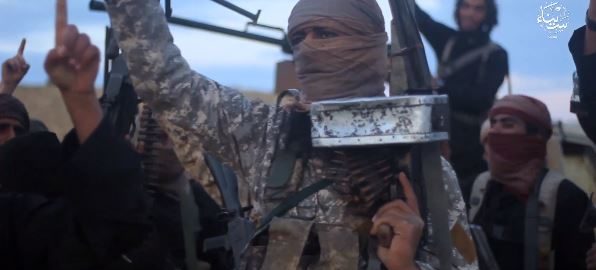It has been almost a year since the great reorganization started by the group Islamic State (IS) in July 2018, when tens of provinces in Syria, Iraq, Libya and Yemen were combined in larger wilayat while other territories were recognized as official provinces (i.e. Somalia and East Asia). Much has changed in such a short time: IS has lost the last strongholds of its former “heartland” in Syraq, making some optimistically believe that this would cripple the group and maybe contain it online as a “cyber caliphate”.
On the contrary, the fall of Baghouz in Syria seemed to trigger the “dirty bomb” phase of IS’ communication, one of the most active since the fall of Mosul in 2017. Then, in June 2019, IS started publishing a video series called “And the best outcome is for the righteous”. This series focus on the renewing of the pledge of loyalty to the “caliph” Abu Bakr al-Baghdadi by several allegedly affiliated groups across IS’ provinces. Even though renewing the bay’ha used to be a relatively common view in IS’ videos, in this case there seems to be a coordinated media campaign which, among other elements, could offer some insights of a possible new communication phase for the “caliphate”.
Indeed, the Syraq has been IS’ main territorial point of reference but far from being the only one. For years IS has called its “soldiers” to reach one of its several territories, from Africa to Eastern Asia, if travelling to Syria and Iraq had proved too difficult. Abu Bakr al-Baghdadi himself indicated some of these destinations during his speech “In the Hospitality of the Leader of the Faithful” delivered in late April 2019, rallying its audiences to “join the caravans in Iraq, Sham, Yemen, Sinai, Khurasan, Libya, West Africa, Central Africa, East Asia, Qawqaz and others”. Given this fundamental context, it is possible to note that IS has made three different steps since March 2019:
- The fall of Baghouz triggered the “Vengance for the blessed province of Sham” campaign. This campaign gathered the various claims of attacks made by the group around the globe, presenting them as part of a united effort and thus showing how IS could still be present and act in its different territories against its enemies. Most importantly, this was a unifying campaign for which every attack contributed not just to the local theatre but to the global IS front;
- The speech made by Abu Bakr al-Baghdadi in April started the second reorganization of IS’ provinces. Ten days earlier the group created a new wilayah, Central Africa, followed by a tripartition of wilayah Khorasan’s large territory and the creation of wilayah al-Hind (May 10th) and wilayah Pakistan (May 15th);
- The series “And the best outcome is for the righteous” ideally showed the “one vision” of IS and a “rally ‘round the flag” effect after al-Baghdadi’s speech.
What is happening in these months is therefore the second reorganization of IS which, true to a new version of “remaining and expanding”, is reshaping and adapting itself – not so much to new fronts but most of all to the new conditions. Time and again IS suffered defeats in various battlefields in Iraq and Syria, so between spring and summer 2019 it stressed the attention on other provinces more than ever – such as the “expansion” initiative in Africa and Asia. However, in this new form IS cannot exercise control over its territories as it used to during its occupation in Syraq and in time the group exerted a looser influence over the outer provinces. For this reason, after the “new expansion”[1] in Central Africa, al-Hind and Pakistan (and possibly still ongoing), IS needed to consolidate and resorted to its most powerful weapon: its propaganda. This “new expansion” (18th of April, 10th and 15th of May respectively) turned into a widespread consolidation thanks to the episodes of the series “And the best outcome is for the righteous”, published in rapid succession (15th, 19th, 22nd, 26th and 29th of June) by a number of wilayat (West Africa, Sinai, East Asia, Qawqaz and Khurasan).
In summary, IS exploited the military defeats in Syria to wage a unifying campaign, laying the foundations of a new “decentralized caliphate”. It then used this momentum to launch a communicative offensive with the speech made by Abu Bakr al-Baghdadi and the attacks in Sri Lanka in April, followed by a “new expansion”. The final step consisted in consolidating those apparent successes.
In conclusion, this “caliphate” is very different from what we knew one year ago. Although over time the group has suffered numerous losses in terms of territory, income and manpower, it is adapting to the new circumstances, presenting a new decentralized shape and new official strategies[2]. IS has proven that its resilience and great communicative strategies are still capable to effectively inspire its sympathizers, thus posing a renewed challenge for its enemies.
[1] It should be noted that the tripartition of Wilayah Khurasan’s territory indeed created new wilayat but the size of the territories nominally under IS influence in the region remained the same. A clear example of how IS’ propaganda can deceive and be far from reality.
[2] Although not new, such strategy has been institutionalised in four articles published on al-Naba newpaper between April and May 2019. http://www.aymennjawad.org/2019/04/islamic-state-insurgent-tactics-translation

